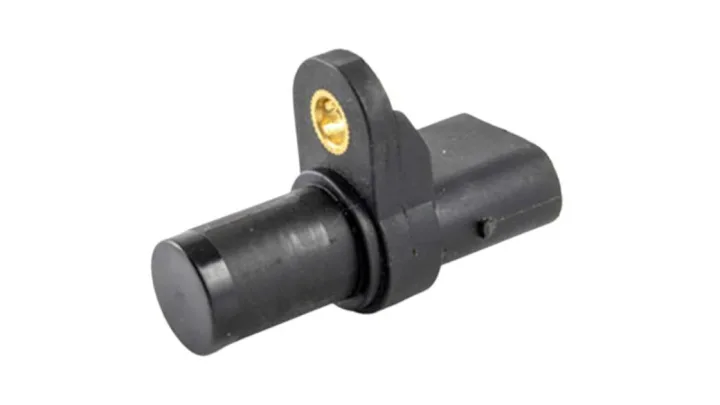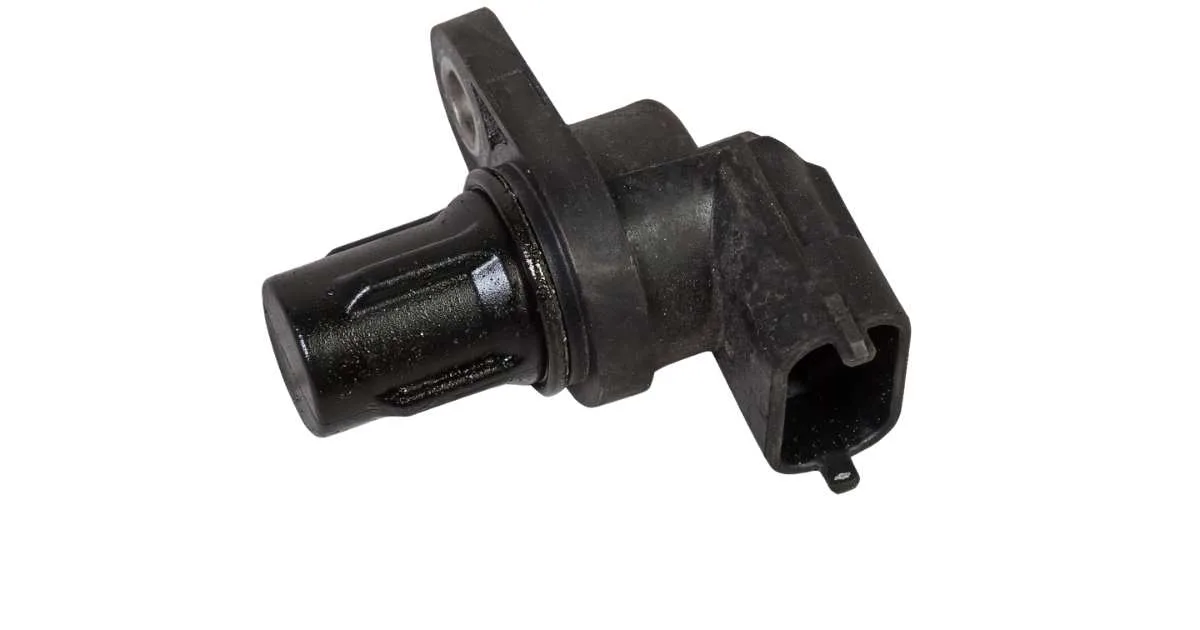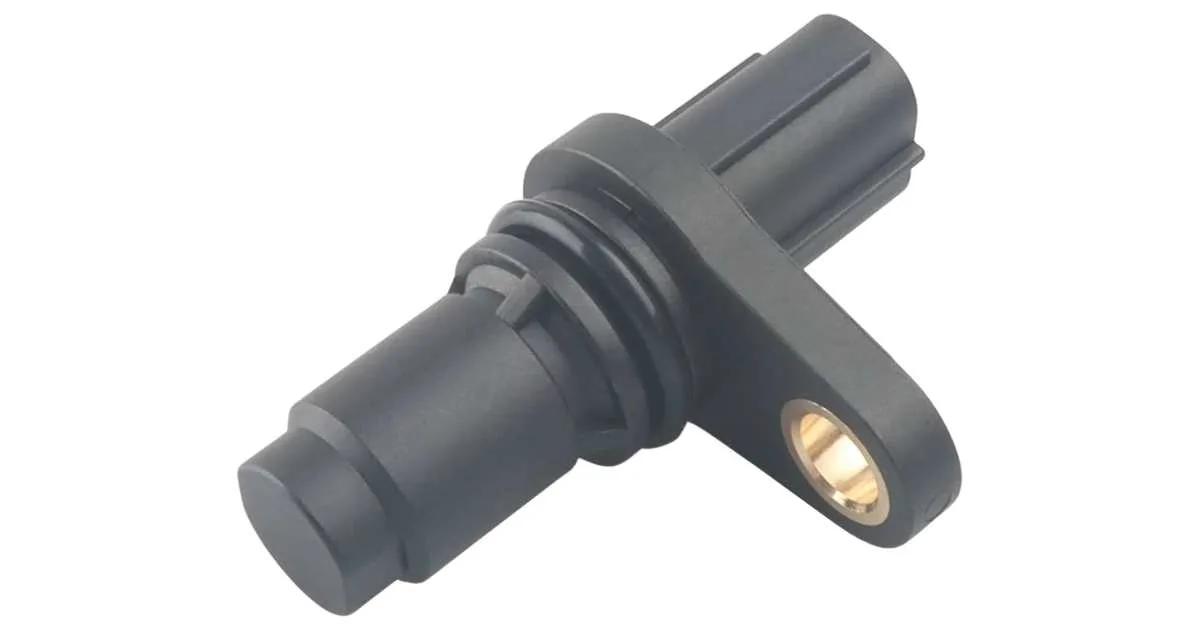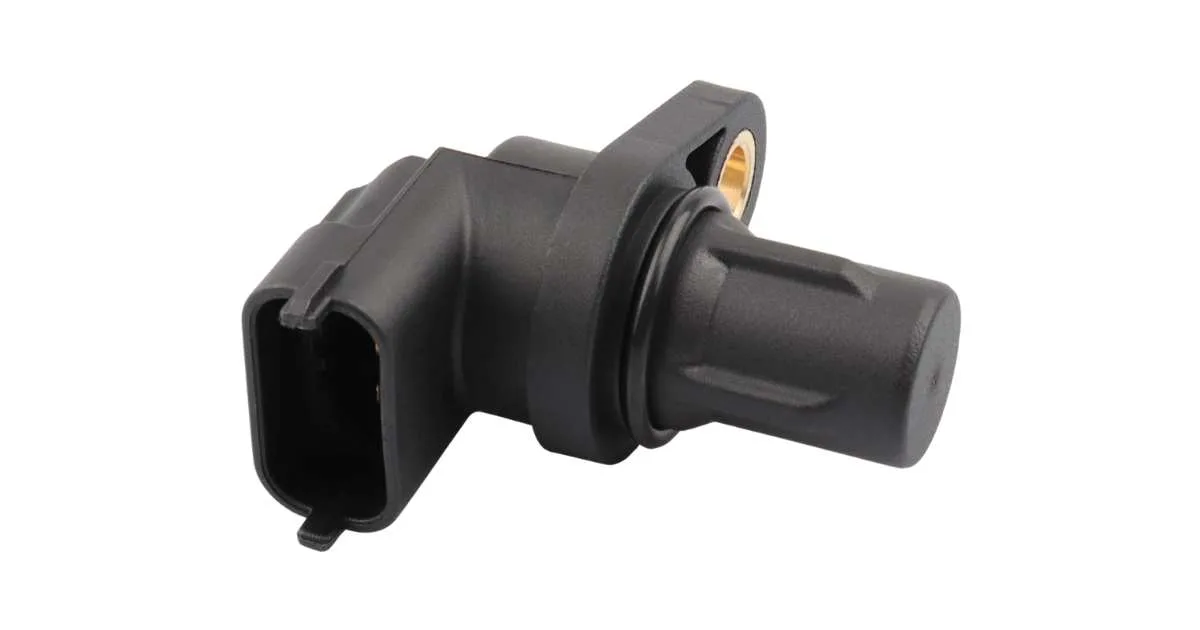
Absolutely, driving with a faulty camshaft position sensor can be risky. A malfunctioning sensor disrupts engine timing and performance.
Imagine setting out on a journey, and suddenly your car behaves unpredictably. That's what a bad camshaft position sensor can do. It's a small component with a big job: it tells the engine's control unit the position of the camshaft.
This info helps manage fuel injection and ignition timing. So, can you still drive your car if this tiny yet vital piece starts failing? Let’s explore the risks and what you should know before deciding to hit the road. Your car may start and move even with a bad sensor, but it's like walking with a sprained ankle; doable, but not advisable. Driving like this could lead to larger issues, safety hazards, and costly repairs. It's essential to understand the role of the camshaft position sensor. It ensures your engine runs smoothly. Without it working right, your car might stall, consume more fuel, or lose power. These symptoms can turn a simple drive into a stressful ordeal. It’s best to address the problem promptly rather than risk the unpredictable consequences of a failing sensor.
 Driving On A Defective Camshaft Position Sensor
Driving On A Defective Camshaft Position Sensor
 Professional Versus Diy Repairs
Professional Versus Diy Repairs
 Legal And Insurance Implications
Legal And Insurance Implications
The Role Of The Camshaft Position Sensor
The camshaft position sensor plays a vital role in your car's engine. It sends the engine's control unit information about camshaft speed and position. This data is key to engine timing. It ensures fuel injection and ignition occur at the right time. With a faulty sensor, your car might struggle to run smoothly, if at all.Key Functions In Engine Management
The sensor's main job is to keep the engine running well. It helps with fuel efficiency and emissions control. The sensor also aids in smooth acceleration. Without it, engine misfires and poor performance can happen. Your car needs this small part to manage its engine properly.Symptoms Of A Failing Sensor
Is your car's engine light on? This could be a sign of sensor trouble. A bad sensor can cause poor fuel economy. Your car might stall or have difficulty starting. Rough idling or a drop in power could also occur. If you notice these issues, get your car checked. Driving with a bad sensor can lead to bigger problems. Driving On A Defective Camshaft Position Sensor
Driving On A Defective Camshaft Position Sensor
Driving On A Defective Camshaft Position Sensor
Driving with a bad camshaft position sensor puts your car at risk. This sensor plays a crucial role. It manages engine timing and fuel injection. When it fails, your car struggles. Let's dive deeper into the immediate effects and potential long-term damage.Immediate Effects On Vehicle Performance
A failing sensor affects your car right away. Your engine might stall. Starting the car becomes hard. Fuel economy drops. These signs show up early. They signal trouble under the hood.Potential Long-term Damage To The Engine
Ignoring these warnings leads to more harm. The engine might suffer. Parts can wear out faster. Fixing these issues costs more later. It's wise to address problems early. A timely fix saves your engine and wallet.Safety Concerns And Performance Issues
When it comes to driving safety and car performance, few components are as critical as the camshaft position sensor. This small part plays a huge role in your car's operation. Ignoring a bad camshaft position sensor can lead to major issues. Let's discuss these problems and understand why taking immediate action is crucial.Risk Of Sudden Breakdowns
Driving with a faulty camshaft position sensor is risky. Your car could stop without warning. This sudden halt not only leaves you stranded but also poses a danger to others on the road. Quick repairs prevent unexpected stops and ensure road safety.Compromised Fuel Efficiency And Emissions
A bad sensor affects how your car uses fuel. Your engine might use more gas and produce more pollution. This not only hits your wallet but also harms the environment. A timely fix restores fuel efficiency and cuts emissions. Credit: www.youtube.comDiagnostic Steps To Confirm Sensor Failure
Identifying a bad camshaft position sensor requires accurate steps. These steps help avoid unnecessary repairs. Let's explore key diagnostic procedures.Common Diagnostic Trouble Codes (dtcs)
When a sensor fails, your car's computer logs specific codes. These codes trigger the check engine light. Mechanics use a scanner to read these codes. Some common codes include:- P0340: Camshaft Position Sensor Circuit Malfunction
- P0341: Camshaft Position Sensor Circuit Range/Performance
- P0345: Camshaft Position Sensor A Circuit Malfunction (Bank 2)
Physical Inspection And Testing
Next, a physical check is crucial. Mechanics look for sensor damage. Visible wear or oil contamination is a bad sign. Electrical tests follow. A multimeter measures the sensor's output. It should align with manufacturer specs. If readings are off, the sensor likely needs replacing. By following these diagnostic steps, you can confirm a faulty camshaft position sensor. This ensures accurate repairs and restores engine performance. Professional Versus Diy Repairs
Professional Versus Diy Repairs
Professional Versus Diy Repairs
Deciding between professional or DIY repairs for a bad camshaft position sensor is crucial. This part is key for your car's engine to run smoothly. Let's explore when to seek a mechanic's help and how to tackle the replacement yourself.When To Call A Mechanic
- Complex symptoms: If your car shows serious issues like stalling or failing to start, a mechanic should check it.
- Multiple faults: Cars with several problems need a professional look.
- Lack of tools: Special tools are often needed. Without them, see a mechanic.
Guidelines For Diy Sensor Replacement
Replacing a camshaft position sensor can be straightforward. Follow these steps for a smooth process.- Identify the sensor location: Check your car manual to find it.
- Gather tools: You'll need basic tools like wrenches and screwdrivers.
- Remove the old sensor: Unplug it and unscrew carefully.
- Install the new sensor: Screw in the new one and reconnect it.
- Test your car: Start your car to check if the issue is fixed.
Preventive Maintenance To Avoid Sensor Problems
Maintaining your car is key to avoiding costly repairs. Focus on the camshaft position sensor to keep your ride smooth. This tiny part can cause big problems. Let's keep your car running well with some simple tips.Regular Inspection Intervals
Set times to check your car's vital parts. Do this often. Your sensor is one of these parts. A quick look can save you from trouble later.- Check your sensor as part of your regular oil change.
- Review your car's manual for the best times to inspect.
- Spot issues early to avoid big repairs.
Keeping The Engine Clean
Keep your engine free of dirt and grime. A clean engine runs better. It helps your sensor last longer.- Wash your engine with proper cleaning agents.
- Avoid harsh chemicals that can damage sensors.
- Ensure a pro checks your engine if you're unsure.
Cost-benefit Analysis Of Driving With A Bad Sensor
Deciding to drive with a bad camshaft position sensor involves weighing costs and benefits. This choice impacts both immediate expenses and future car value. Let's explore.Short-term Savings Versus Long-term Costs
Driving with a bad sensor saves money now. No immediate repair costs. Sounds good? Think again. This choice leads to bigger problems. Engine issues. Poor fuel efficiency. Higher repair bills later. Short-term savings? Yes. Wise in the long run? No.Impact On Vehicle Resale Value
A bad sensor affects more than performance. It hits your wallet again when selling the car. Buyers want a well-maintained vehicle. A history of driving with faulty parts? That lowers the car's value. Keeping the car in good shape means better resale value. Simple. Legal And Insurance Implications
Legal And Insurance Implications
Legal And Insurance Implications
Driving with a bad camshaft position sensor poses not only mechanical concerns but also legal and insurance issues. Vehicle owners must understand the implications.Roadworthiness And Compliance Issues
A bad camshaft position sensor can lead to engine problems and unreliable vehicle behavior. Road safety regulations require that cars meet specific standards of roadworthiness. Driving a car that fails to comply with these standards could result in penalties, including fines and citations. It's essential to ensure your vehicle meets legal requirements for road use at all times.Insurance Coverage In Case Of Sensor-related Accidents
In the event of an accident, insurance companies assess the car's condition. If a pre-existing issue like a faulty camshaft position sensor contributed to the accident, insurance claims could be affected. Some policies may not cover damages if negligence, such as ignoring necessary repairs, is found. Always keep your car in good repair to maintain valid insurance coverage.Alternatives To Driving With A Bad Sensor
Dealing with a faulty camshaft position sensor can be tricky. Your car might show signs of rough idling, poor acceleration, or even fail to start. You might wonder about safe ways to get around without driving your car in this state. Let's explore some practical alternatives.Temporary Fixes While Awaiting Repair
Some drivers opt for temporary solutions. They might clean the sensor or reset the car's battery. These steps may help for a short time. They won't fix the issue for good, though. The sensor will need proper attention from a mechanic soon.Considering Rental Or Public Transportation Options
Looking at rental cars or public transit is wise. It avoids putting stress on your car's engine. Renting a car can keep you on the move. Public transit is another budget-friendly choice. Buses and trains can get you to work or the store without hassle.Conclusion: Making An Informed Decision
Deciding to drive with a bad camshaft position sensor is critical. Your safety and car's health depend on this choice. Let's weigh the risks and the need for repairs. This will help you make a smart choice for your driving future.Balancing Risks With Practical Considerations
Driving with a faulty sensor can be risky. Your car might stall or run poorly. This can be dangerous. You must consider your daily needs and your car's condition. Is your car vital for your job or family? Then you might choose to drive short term. Still, plan for a repair soon to avoid bigger problems.The Importance Of Timely Repairs
Fixing a bad camshaft position sensor fast is key. It helps prevent more damage. This saves money and keeps your car safe. A working sensor means better fuel economy and a smoother ride. Don't wait too long. Visit a mechanic soon to keep your car running well. Credit: www.delphiautoparts.comFrequently Asked Questions
What Are The Symptoms Of A Bad Camshaft Position Sensor?
Driving with a bad camshaft position sensor can result in reduced engine performance, rough idling, and difficulty starting your car. You may also experience an increase in fuel consumption and potentially a stalling engine. These symptoms indicate it's time to check your sensor.Can A Car Run Without A Camshaft Position Sensor?
Technically, a car might still run without a camshaft position sensor, but it will operate poorly. The engine's timing will be off, leading to decreased performance, higher fuel consumption, and increased emissions. It's advisable to address the issue immediately for optimal vehicle operation.How Urgent Is Replacing A Bad Camshaft Position Sensor?
Replacing a bad camshaft position sensor is quite urgent to prevent further engine damage. Driving with a faulty sensor can lead to poor engine performance, increased fuel consumption, and even engine failure. It's best to replace it as soon as possible to maintain your car's health.What Does A Camshaft Position Sensor Do?
The camshaft position sensor monitors the position of the camshaft and sends this information to the vehicle's computer. This data is crucial for controlling the fuel injection timing and ignition system, ensuring your car runs smoothly and efficiently.Conclusion
Driving with a bad camshaft position sensor is risky. Your car may show erratic behavior. Ignition troubles and fuel inefficiency often follow. Safety becomes a big concern. It's best to address the issue quickly. Regular maintenance helps avoid such problems. Trust a professional for repairs. Remember, a well-functioning sensor keeps your car running smoothly. Safe driving should always be your top priority.Disclosure
Some links may be affiliate links. That means we may earn a small commission at no extra cost to you.